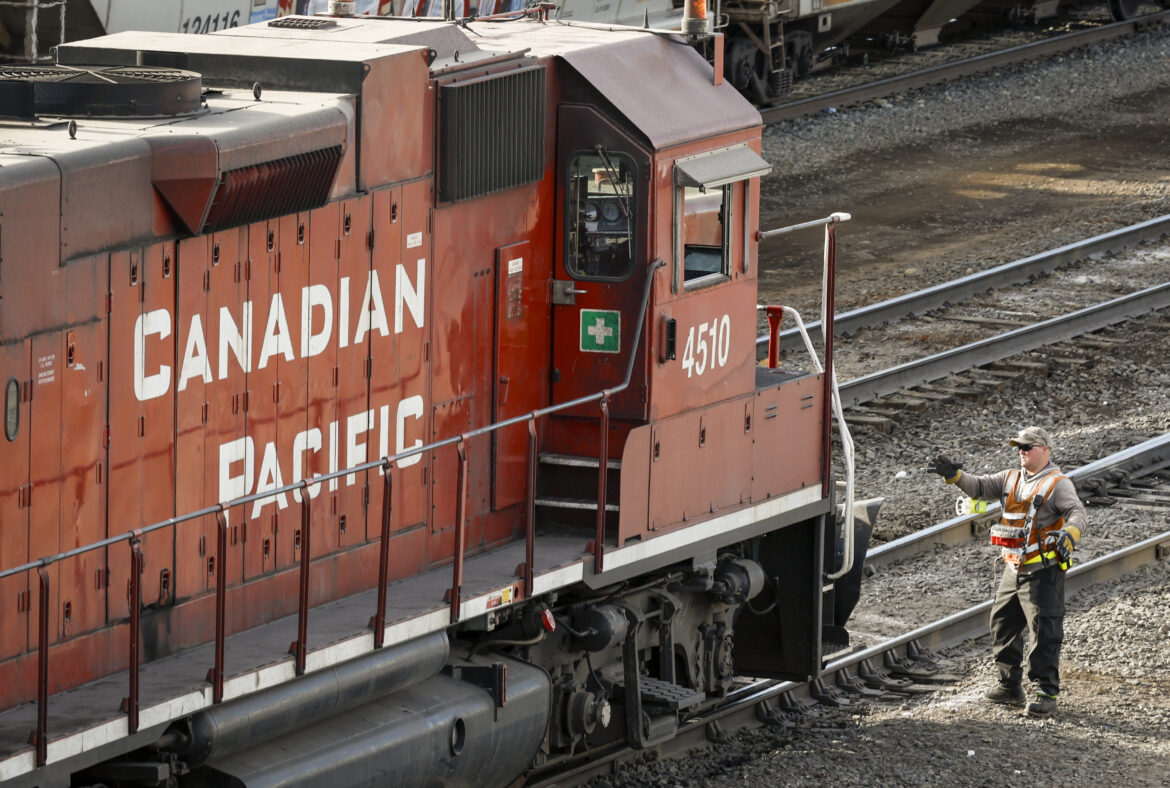The country’s two main railways and their workers remain at loggerheads over scheduling, safety or salaries — depending on who you ask — as the clock ticks down on contract negotiations.
On Friday, Canadian National Railway Co. and Canadian Pacific Kansas City Ltd. warned they will lock out employees on Aug. 22 unless they can reach deals with their employees, lending new weight to the threat of a work stoppage that could snarl supply chains countrywide.
The Teamsters Canada Rail Conference (TCRC), which represents some 9,300 engineers, conductors, yard workers and rail traffic controllers, claimed that CPKC wants to “gut the collective agreement of all safety-critical fatigue provisions.”
CN has targeted fewer points linked to fatigue, the Teamsters said, but has also proposed what the union called a “forced relocation scheme” that would see some employees move to far-flung locations for several months at a time to fill labour gaps.
“From the very beginning, railworkers have only ever sought a fair and equitable agreement. Unfortunately, both rail companies are demanding concessions that could tear families apart or jeopardize rail safety,” said Teamsters president Paul Boucher in a statement Friday.
The railways have put forward two different sets of offers each, stating that they all comply with safety rules — a point the union has not denied.
One CN proposal would see employees on a scheduled 40-hour work week, with at least 10 or 12 hours of rest between shifts — depending on whether they’re at home or away — and either two or three consecutive days off each week, in compliance with the law.
The scheduled approach to shifts — a comparable offer was tabled by CPKC before being withdrawn “conditionally” on Friday — would mark a drastic change from the mileage-based system of pay that has been in place for decades at both companies.
If accepted, the new arrangement would make for more predictability for workers and managers, the railways say. But if an employee reached their destination hours ahead of time, it would also mean they could be assigned to other tasks rather than clocking out on arrival.
“None of CN’s offers compromised safety in any way. The latest offer proposed third-party arbitration,” the Montreal-based railway said in a release Friday, adding that the union has made no counter-proposals.
The union has turned down offers of binding arbitration from both railways.
CN said it also extended an offer that aligns more with the framework of the current contract and includes pay bumps.
Likewise, CPKC said the sticking points for its “status quo” proposal revolve around wages as well as “held-away” pay — income that kicks in after a certain number of hours off-shift in a spot that is not the worker’s home terminal. The Calgary-based railroad operator wants to push back the start time on that pay, an adjustment made in response to the longer rest-period times mandated by tighter federal regulations.
“The status quo-style offer fully complies with new regulatory requirements for rest and does not in any way compromise safety,” CPKC said in a release Friday.
In May 2023, new rules came into effect that raised the minimum rest period between shifts to 10 hours at home and 12 hours when away, versus the previous six hours and eight hours, respectively. They also capped freight workers’ maximum shift length at 12 hours, down from 16.
In a ruling last Friday, the national labour tribunal ordered a 13-day cooling-off period as part of a pair of decisions that deemed rail services non-essential, opening the door to a full-fledged work stoppage as early as next week.






